
Augsburg is a city in Swabia, Bavaria, Germany, around 50 kilometres (31 mi) west of Bavarian capital Munich. It is a university town and regional seat of the Regierungsbezirk Schwaben with an impressive Altstadt. Augsburg is an urban district and home to the institutions of the Landkreis Augsburg. It is the third-largest city in Bavaria with a population of 300,000 inhabitants, with 885,000 in its metropolitan area.

A tower block, high-rise, apartment tower, residential tower, apartment block, block of flats, or office tower is a tall building, as opposed to a low-rise building and is defined differently in terms of height depending on the jurisdiction. It is used as a residential, office building, or other functions including hotel, retail, or with multiple purposes combined. Residential high-rise buildings are also known in some varieties of English, such as British English, as tower blocks and may be referred to as MDUs, standing for multi-dwelling units. A very tall high-rise building is referred to as a skyscraper.

The House of Fugger is a German family that was historically a prominent group of European bankers, members of the fifteenth- and sixteenth-century mercantile patriciate of Augsburg, international mercantile bankers, and venture capitalists. Alongside the Welser family, the Fugger family controlled much of the European economy in the sixteenth century and accumulated enormous wealth. The Fuggers held a near monopoly on the European copper market.

An apartment, flat, or unit, is a self-contained housing unit that occupies part of a building, generally on a single story. There are many names for these overall buildings, see below. The housing tenure of apartments also varies considerably, from large-scale public housing, to owner occupancy within what is legally a condominium, to tenants renting from a private landlord.
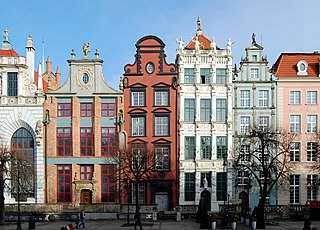
A townhouse, townhome, town house, or town home, is a type of terraced housing. A modern townhouse is often one with a small footprint on multiple floors. In a different British usage, the term originally referred to any type of city residence of someone whose main or largest residence was a country house.

A condominium is an ownership structure whereby a building is divided into several units that are each separately owned, surrounded by common areas that are jointly owned. The term can be applied to the building or complex itself, as well as each individual unit within. The term "condominium" is mostly used in the USA and Canada, but similar arrangements are used in many other countries under different names.
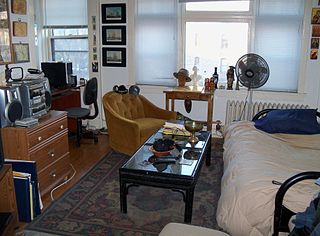
A studio apartment, also known as a studio flat (UK), a self-contained apartment (Nigeria), efficiency apartment, bed-sitter (Kenya) or bachelor apartment, is a small apartment in which the normal functions of a number of rooms – often the living room, bedroom, and kitchen – are combined into a single room.
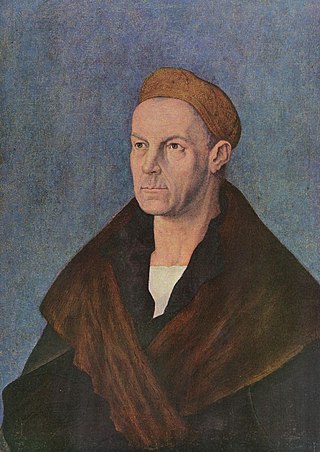
Jakob Fuggerof the Lily, also known as Jakob Fuggerthe Rich or sometimes Jakob II, was a major German merchant, mining entrepreneur, and banker. He was a descendant of the Fugger merchant family located in the Mixed Imperial City of Augsburg, he was born and later also elevated through marriage to Grand Burgher of Augsburg. Within a few decades, he expanded the family firm to a business operating in all of Europe. He began his education at the age of 14 in Venice, which also remained his main residence until 1487. At the same time, he was a cleric and held several prebendaries, even though he lived in a monastery, Jakob found time to study the history of investment in early Asian markets. American journalist Greg Steinmetz has estimated his overall wealth to be around $400 billion in today’s money, equivalent to 2% of the GDP of Europe at that time.

A three-decker, triple-decker triplex or stacked triplex, in the United States, is a three-story (triplex) apartment building. These buildings are typically of light-framed, wood construction, where each floor usually consists of a single apartment, and frequently, originally, extended families lived in two, or all three floors. Both stand-alone and semi-detached versions are common.
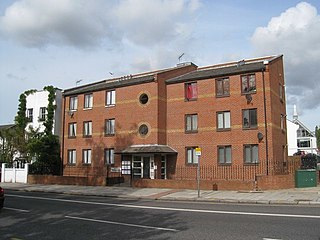
Multifamily residential is a classification of housing where multiple separate housing units for residential inhabitants are contained within one building or several buildings within one complex. Units can be next to each other, or stacked on top of each other. A common form is an apartment building. Many intentional communities incorporate multifamily residences, such as in cohousing projects. Sometimes units in a multifamily residential building are condominiums, where typically the units are owned individually rather than leased from a single apartment building owner.

834 Fifth Avenue is a luxury residential housing cooperative in the Upper East Side of Manhattan, New York City. It is located on Fifth Avenue at the corner of East 64th Street opposite the Central Park Zoo. The limestone-clad building was designed by Rosario Candela, a prolific designer of luxury apartment buildings in Manhattan during the period between World War I and World War II. 834 Fifth Avenue is widely regarded as one of the most prestigious apartment houses in New York City. It has been called "the most pedigreed building on the snobbiest street in the country’s most real estate-obsessed city" in an article in the New York Observer newspaper. This status is due to the building's overall architecture, the scale and layout of the apartments, and the notoriety of its current and past residents. It is one of the finest buildings designed by Rosario Candela, according to The New York Times.

Kirchheim or Kirchheim in Schwaben is a municipality and a market town in the district of Unterallgäu in the region of Swabia (Schwaben) in the south-west of Bavaria, Germany. The town was greatly influenced by the Fugger family. North-east of the town lies the Augsburg Western Woods Nature Park.

The Pasadena Apartments is an apartment building located at 2170 East Jefferson Avenue in Detroit, Michigan. It was listed on the National Register of Historic Places in 1985.

The House of Kirchberg were a Swabian aristocratic family, once wealthy that held the County of Kirchberg, mainly south of Ulm, on the right and left of the Iller. They are difficult to document, but at the end of the early Middle Ages and the beginning of the High Middle Ages they may have had a significance that went beyond regional power. By the end of the 12th century, the family had split into two lines, later into three, becoming impoverished towards the end of the Middle Ages and dying out in 1510 after the sale of their possessions and rights.

Tratzberg Castle is a castle in Jenbach, Tyrol, Austria. Tratzberg Castle is located on a steep ridge above Jenbach in the Austrian part of Tyrol. It is an excellent example of palace architecture typical for the alpine parts of the Holy Roman Empire during the late Gothic and early Renaissance period. The castle was built in its present form in 1500 mostly by the brothers Veit-Jakob and Simon Tänzl. Today Tratzberg Castle is owned and inhabited by Count Ulrich Goëss-Enzenberg and his wife Katrin Goëss-Enzenberg. Tratzberg is also one of the best preserved castles in Austria, having many of its original furnishings and fittings.
Joseph-Ernst Graf Fugger von Glött , since 1940: Fürst Fugger von Glött was a German politician and representative of the Christian Social Union of Bavaria. He was a member of the Bundestag of Germany between 1949 and 1953. From 1954 to 1962 he was a member of the Landtag of Bavaria. He is a member of the famed Fugger family, the preeminent bankers of the renaissance era.
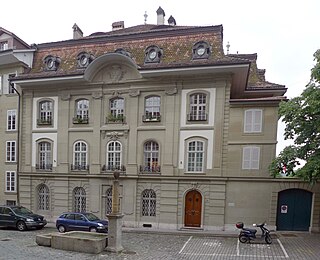
The von Wattenwyl house on Herrengasse 23 is a historic building in Bern, Switzerland, named after the von Wattenwyl family who owned it for over 200 years.

Georg Fuggervon der Lilie (1453–1506) was a German merchant of the Fugger dynasty.
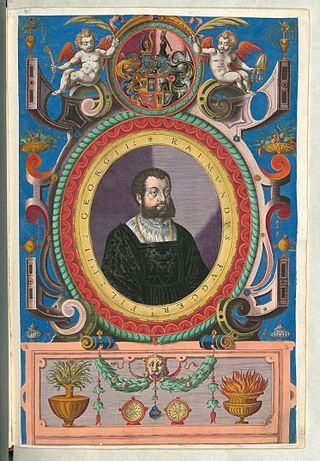
Raymund or Raimund Fugger was a German businessman, Imperial Count and art collector of the 'of the Lily' branch of the Fugger family.

Count Wilhelm IV of Eberstein was a member of the Swabian noble Eberstein family. His father, Bernhard III (1459–1526) was president of the Reichskammergericht from 1510 to 1520. His mother was Countess Kunigunde of Sonnenberg (1472–1538).

























